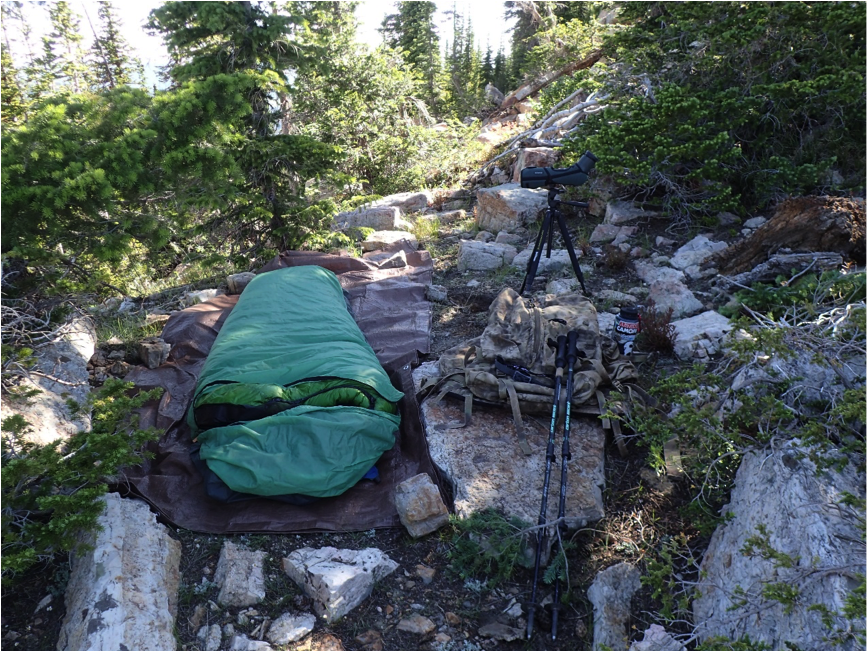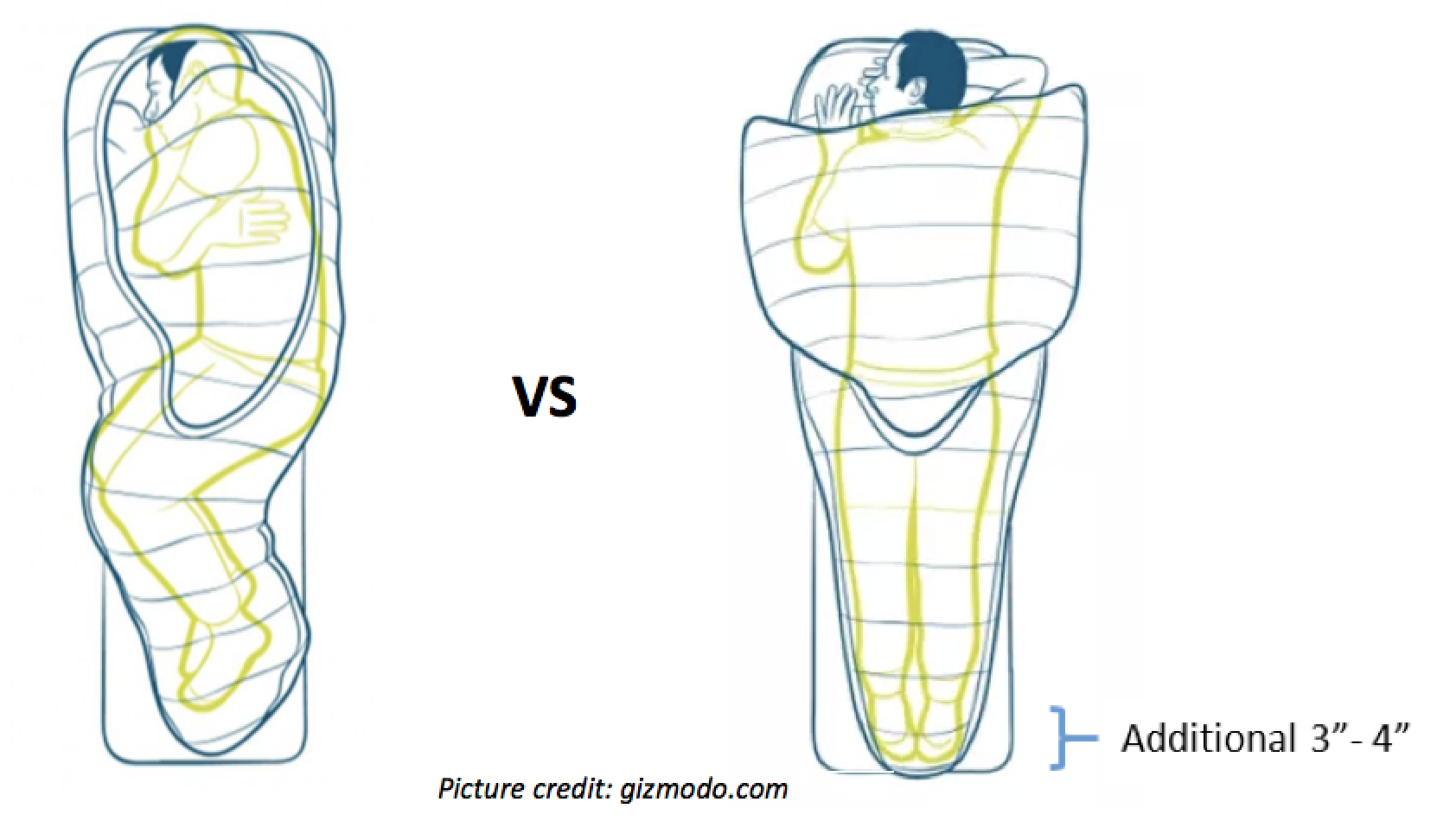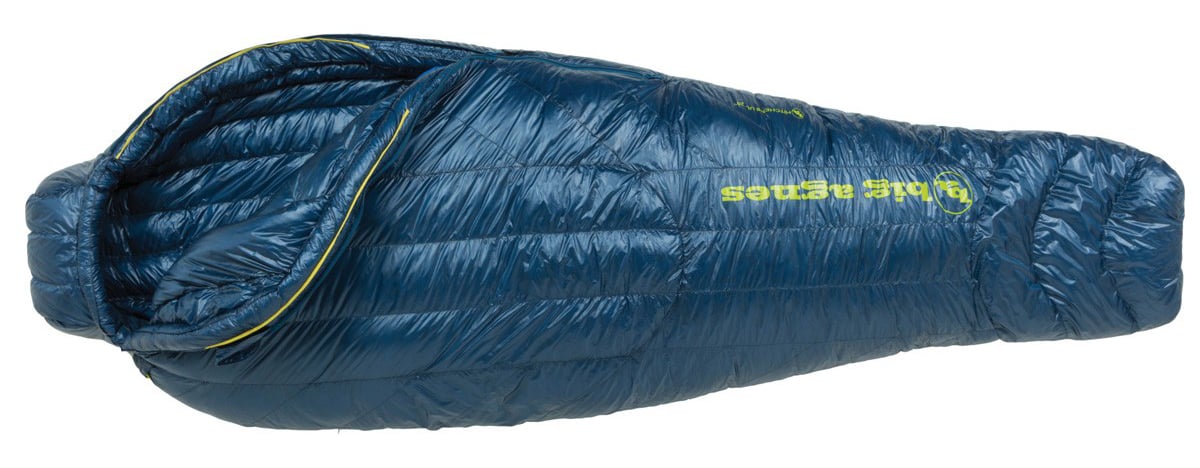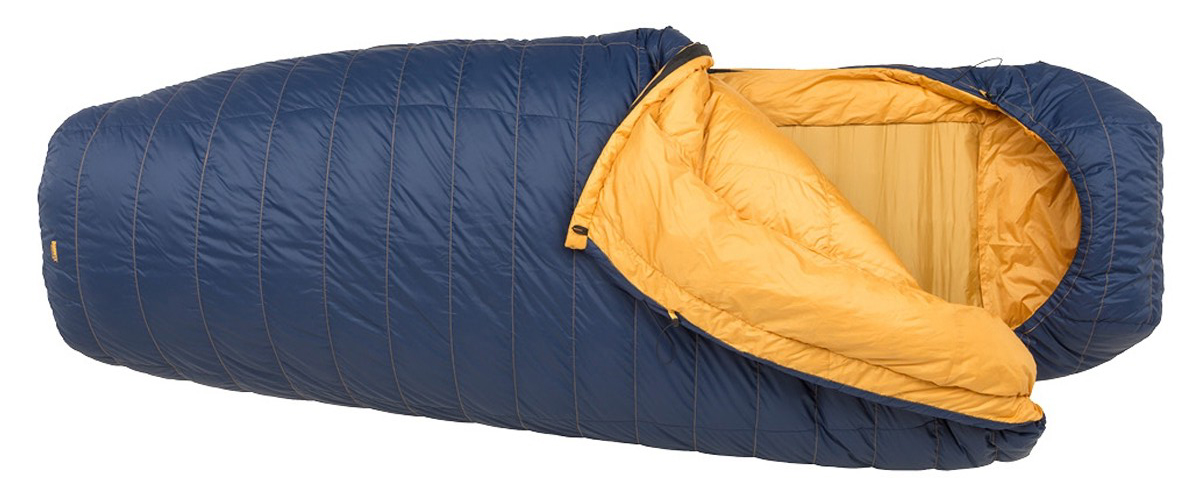How to Select the Right Sleeping Bag
A sleeping bag that helps you sleep well can be a game-changer while spending time in the outdoors. If you don’t get some quality sack time at night, not only will you not be at peak performance the next day, you could end up pretty miserable. But not just any old sleeping bag will fit the bill; you need the right sleeping bag for you based on how you sleep and the conditions you plan to encounter (climate, weather, available shelter, etc.). It’s not a one-size-fits-all formula for selecting one of your most important pieces of gear; there’s several factors that you should take in to account as you look for the right bag for you. Often times, finding the right sleeping bag can be a trial and error process. I can tell you from experience that it is worth the time, effort and money spent finding the right bag that lets you sleep your best at night in the mountains.
There are several styles of sleeping bags: rectangular, mummy, quilt, hybrid, etc. And within each of those categories, you can usually get down or synthetic in most models, left or right side zippers, extra length and/or width, wide vs narrow foot boxes, hood styles, and the list of options goes on and on. While I do own and use a very plush and roomy rectangular style bag that gets paired with a cot and foam pad when the occasion allows, the bag weighs something like 14 pounds and only gets used if I’m sleeping in a trailer or driving right to where I make camp. Since these situations are very uncommon for back country hunters, this article will be geared more towards how to pick the right sleeping bag based on backpack hunting/back country intended use where weight and size are at a premium.

I think one of the most critical factors in bag selection is being conscious of how you sleep best at night, and letting that guide your decision-making process. Whether you’re a side, back, or stomach-sleeper (or somewhere in between), there’s certain styles of bags that will and won’t work well for you. For back and side sleepers, you will most likely be able to sleep very comfortably in a mummy style bag. For stomach sleepers though, mummy bags can be harder to sleep in as they are more restrictive and the hood that is common to a mummy bag design does not allow you to sleep with your arms cradled underneath your head/pillow as stomach sleepers typically do. If you move around a lot in your sleep, make sure to get a wider version of whichever bag you’re looking at so you don’t get all tangled up at night. Personally, I have an incredibly hard time falling asleep if I don’t do so while laying on my stomach. I’ve tried to ‘coach’ myself to fall asleep while laying on my side or back, but that has proven to be an exercise in frustration. I don’t necessarily spend the whole night sleeping on my stomach (although more often than not that is the case), and sometimes I wake up on my back or side, but I just can’t seem to get comfy and fall asleep initially unless I’m laying on my stomach. This is one of the reasons why I am planning to branch out from the traditional mummy style bags for my back country bed, and I’m going to jump into a quilt-style bag (the one I plan to get is not a true quilt as it has a zipper; it’s more of a hybrid sleeping bag/quilt, but the design is open at the head-end like a quilt). One thing to keep in mind when selecting a bag if you’re a stomach sleeper is that when you lay down to sleep on your stomach, typically (if not always) your toes will be pointed away from your head, and this is essentially adding 3-4 inches to your overall height. When you sleep on your back, your feet are pointed up and don’t add to your height. So if you’re 6’ tall but sleep on your stomach, you will be cramped in a 6’ sleeping bag because as soon as you lay down to sleep, you’re essentially 6’ 4” tall.

The type of insulation you go with (down vs. synthetic) is a personal choice, but I believe it is one that should be dictated primarily by what type of conditions you expect to encounter. If the area you will be going to is fairly dry with little to no rain in the forecast, you should be more than fine with down. On the other hand, if you typically venture out in areas that can get a lot of rain, such as the Pacific Northwest or parts of Alaska for example, a synthetic bag may be the way to go since they do a much better job of insulating once they get wet. The loft of down is what insulates. You may have seen down fill power ratings before; the fill rating is supposed to represent how much air the down can trap. Obviously a higher fill rating represents the downs ability trap more air, thus insulating better than lower fill ratings. But, once down gets wet, it loses the ability to trap air and insulate. There are versions of down out there that claim to be treated with water resistant chemicals, but synthetic will insulate better than even this treated down once it gets wet. Now, on the flip side of that, I have always owned a down sleeping bag because they’re lighter and pack down smaller than a synthetic bag with a similar temperature rating. On some of my first back country overnight trips it made me a little nervous to go out in really wet conditions with a down bag, but I quickly found it really isn’t all that hard to keep down dry. If you take a few preventative measures such as paying close attention to tent placement, making sure to vent your shelter at night to minimize condensation, or even digging a shallow trough around your tent so that rain water doesn’t pool underneath but instead runs around it. These easy preventative measures can go a long way to keeping you warm and dry, whether you use down or synthetic.
Another thing to keep in mind when selecting a sleeping bag is the temperature rating. I always prefer to err on the side of caution and take a bag that is warmer than I think I’ll need since it is much easier to cool off than it is to warm up when you’re shivering at night. Keep in mind if you’re a warm or cold sleeper too, meaning do you get hot easy at night, or do you have to sleep with a layer or two on to stay comfortable? I know that I am more of a cold sleeper, so I like having that extra margin in my sleeping bag temp rating when it’s me against Mother Nature. One thing that some people don’t understand is that a sleeping bags temperature rating is not meant to convey that you will be completely comfortable no matter what in your bag down to this temperature; rather it is more along the lines of ‘this bag should keep you alive down to the rated temperature, but it may not be very enjoyable.’ Some manufacturers even assume that the user will be sleeping on top of a quality sleeping pad and wearing long johns or thermals to sleep in when they assign such a rating. So take sleeping bag temperature ratings with a grain of salt and remember that it’s better to be safe than sorry. Also, keep in mind that not all sleeping bags are created equal. For example, a Wal-Mart 0° sleeping bag WILL NOT keep you near as warm when the temps drop to 0° as will a 0° bag from some of the top sleeping bag brands such as Western Mountaineering, Marmot and Big Agnes, to name a few. The difference here is quality of materials used. The old saying ‘you get what you pay for’ really rings true in regards to picking out a sleeping bag.

A good tip to take full advantage of your sleeping bag rating, no matter what it is, is two-fold: make sure to get in the bag as warm as possible, and always pair your bag with a quality pad. Sleeping bags are good at insulating, but if you get in while you’re cold, there’s a good chance you’ll stay on the cooler side once you crawl in and zip up. Sleeping bags are designed to retain heat and reflect it back to you to keep you warm, but if you aren’t warm when you get in, where is that extra warmth supposed to come from? Whatever temperature your core is at when you get in, your sleeping bag is going to more or less keep you at that temperature. You may warm up some, but if you’re cold when you get in, you’re going to stay cold for a while before you warm up (and depending on your bag’s rating, you may not warm up much at all). One thing I’ve done several times to ensure that I’m warm when I get in is to do some pushups to exhaustion as fast as I can (jumping jacks or a similar callisthenic exercise will work well too). Getting your blood pumping and heart rate up a little right before jumping in your bag will raise your core temperature, and once you zip up your bag, that additional heat will be reflected right back at you as you get comfy and fall asleep. I can personally vouch for this method of ensuring a warmer nights’ sleep.

A good sleeping pad can really help you stretch the limits of your sleeping bag. I won’t go in to too much detail on pad choice, but make sure to get a pad that fits your needs in terms of R-rating (warmth) and also size and shape for how you sleep and if you move much at night. Inflatable pads are my favorite because they pack down small and are very light-weight. The ground will suck the warmth right out of you at night if you don’t have a good pad to act as a barrier between it and you. To take full advantage of your sleeping bag, you must pair it with a good sleeping bag.
There’s lots of areas where we can skimp when picking out gear, but a quality sleeping bag isn’t one of them. Make sure you do your homework, test out as many as you can, and buy the best you can afford. You won’t regret it.


Thanks,
Joey